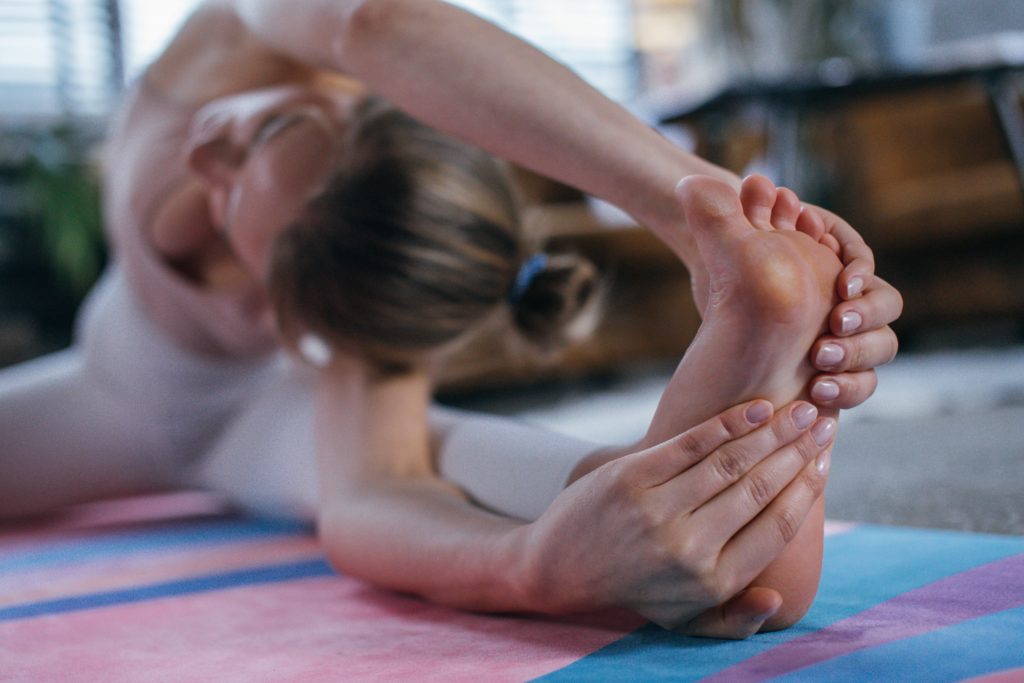
Pilates, developed over a hundred years ago by its namesake Joseph Pilates, is a great way to stay active even in 2021! Read more about the physical and mental health benefits.
Pilates is a popular form of group exercise that’s used the world over for people looking to improve balance, flexibility and the all-important core strength. Our National Fitness Survey found that group exercise attracts 4.86 million participants every week. Nearly 900,000 of those surveyed attend a class. It just goes to show how effective it can be as a form of exercise and, as we’re about to explore, how its initial ideas and concepts have stood the test of time.
Typically, Pilates is performed on a mat using the participant’s own bodyweight, hence the name mat/mat-based Pilates. It can also be common for traditional mat Pilates classes to feature the use of props and other pieces of small equipment such as resistance bands, circles, blocks, bolsters and foam rollers. Equipment has multiple uses and can help make exercises both easier or more challenging, depending on the participant’s exercise level and range of movement.
A more advanced form of the exercise style, known as reformer Pilates, is a little different from its mat-based counterpart and is often considered more intense. Reformer classes use a piece of apparatus known as a ‘universal reformer’ that closely resembles an old-fashioned bed.
While reformer Pilates classes tend to only be found in specialised studios (although they are becoming more prominent), mat Pilates classes are commonly taught in health clubs, gyms and community centres.
A brief history of Pilates
What we know as Pilates today, began life as ‘Contrology’ and was developed by Joseph Hubertus Pilates. Joseph, born in 1883 in West Germany, had something of a tumultuous childhood and suffered from a range of ailments including asthma, rickets and rheumatic fever. Medical professionals informed Joseph’s parents that he wouldn’t survive, but defying expectations, Joseph dedicated his life to overcoming his fragile state and nursing himself back to full health.
Keen to spread the restorative effects of his methods, Joseph travelled to England during the early 1910s. With the start of the First World War, he found himself interned with his fellow German nationals, despite obviously posing no threat to national security. During this period that Joseph honed his techniques and worked with patients who were unable to walk. This is where the reformer was born, with Joseph attaching springs to hospital beds in order to support patients’ limbs.
When the war ended Joseph eventually made his way to America with his wife Clara and he opened a gym in New York. Using ‘apparatus’, such as the Cadillac, Wunda chair and the reformer, he focused on exercises that would aid with alignment, strengthen the body and promote recovery. His work proved particularly popular with those from the worlds of performing arts, particularly dancers, who were looking to stay in peak physical condition.
Joseph Pilates eventually went on to publish his work in written form, his first book ‘Your Health: A Corrective System of Exercising That Revolutionises the Entire Field of Physical Education’ was released in 1934 and his second, ‘Return to Life Through Contrology’ in 1945. These techniques were known as Contrology until Joseph’s death in 1967.
From that point onward, the practice morphed into what we now call Pilates.
Principles and benefits of Pilates
Over the decades, Pilates has greatly evolved. There are many schools and brands that can differ quite significantly from one another. What has always remained are the six key principles outlined by Joseph Pilates himself. These are:
Breathing – According to the man himself, breathing is the first and last thing we do in life.
Concentration – Joseph very much believed that a strong mind-body connection was essential to achieving physical health.
Centring – The core is the powerhouse of the body and mat Pilates exercises always begin here.
Control – This is an essential principle that needs to be mastered in order to achieve musculoskeletal health.
Precision – In Joseph’s mind, getting an exercise right and using precision, was far more important than simply repeating it.
Flow – exercises should be graceful, performed smoothly and flow outwardly from the core.
Those that take these principles to heart and regularly participate in Pilates can reap a wide range of benefits including:
- Improved posture and spine stability
- Strengthening and toning of abdominal muscles (aka the core)
- Improved coordination and balance
- Prevention of common musculoskeletal injuries
- Increased body awareness and concentration
Written by Josh Douglas-Walton, a writer from HFE, a leading group fitness qualification provider whose courses include Personal training, yoga, personal training and most recently reformer Pilates. Find a Pilates class today.

